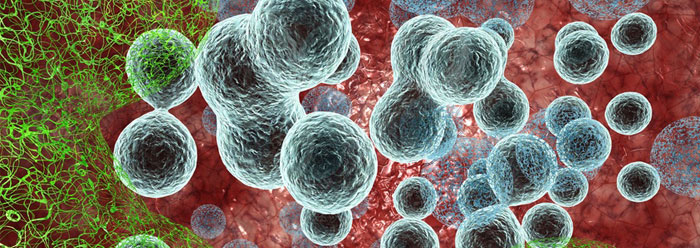Not long ago, scientists discovered that what they thought was a spore-bearing fungal slime mold was actually a temporary congregation of forest-floor, single-cell amoebas. This presented evolutionists with a puzzle…was the organism in question a fungus or an amoeba? If the latter, how could a "simple" one-cell amoeba "learn" to behave like a fungus?
Now, the same creature has revealed even more evolution-defying attributes, as it has been observed "farming" bacteria for food.
The microscopic amoeba cells, named Dictyostelium, live separately when conditions are favorable. But apparently they can sense when times are about to get tough and migrate toward each other to form a many-cell, slug-like unit. The "slug" selects a site to erect a tiny tower, which the linked amoebas manufacture with cellulose that stiffens into a stalk that supports a capsule. Then amazingly, about 30 percent of the amoeba cells transform themselves into hardy spores in a "fruiting body" that is dispersed by wind or animals.1
Where did these amoebas learn such elaborate schemes and how, step by step, could they have naturally acquired the ability to act in concert with apparent foresight?
The recent discovery of the amoebas' "farming" activity reveals yet another level of complex behavior. Research published in Nature compared Dictyostelium's ability to culture and manage bacterial colonies to the way that ants farm fungus, damselfish farm algae, and people perform agriculture.2 The amoebas were grown in the laboratory, and those seeded with bacteria easily outgrew those without bacteria.
The study authors wrote that the "microorganisms are surprisingly like animals." They found that as the amoebas travelled, they did not devour all the bacteria in their path but set some aside for later use in their fruiting bodies. When the spores dispersed, the bacteria were carried with the spores "to seed a new food crop."2 Thus, these "simple" single cells can collect, manage, disperse, and feed on bacteria,3 in addition to their already mind-bogglingly complicated aggregation and spore-formation skills.
How did the amoebas figure all this out? The study authors wrote, "The striking convergent evolution between bacterial husbandry in social amoebas and fungus farming in social insects makes sense because multigenerational benefits of farming go to already established kin groups."2
But does this really make sense? A given biological need cannot specify a solution for itself any more than merely the need to print a book can specify a printing press. Instead, an engineer is always required to creatively design a structure that meets the need, bring the information and parts together, and then construct them into a functional whole.4 The claim that amoebas solved a series of complicated, interdependent engineering problems simply because there was a need to solve them makes no sense in the real world.
In reality, "slime moulds did not evolve from, or into, any other organisms (i.e. all life is not 'cast from the same mould' as some 'primeval slime'). Rather, slime moulds were created during Creation Week (Exodus 20:8-11) as slime moulds, designed to reproduce 'after their kind,'" according to creation science authors Rodney McQueen and David Catchpoole, who described these amoebas as the "fungus that walks."1 It has certainly walked away from any feasible evolutionary explanation.
References
- McQueen, R. and D. Catchpoole. 2000. The 'fungus' that 'walks.' Creation Ex Nihilo. 22 (3): 49-51.
- Brock, D. A. et al. 2011. Primitive agriculture in a social amoeba. Nature. 469 (7330): 393-396.
- Palmer, J. Amoebas show primitive farming behaviour as they travel. BBC News. Posted on bbc.co.uk January 19, 2011, accessed January 21, 2011.
- Guliuzza, R. 2011. Evaluating Real vs. Apparent Design. Acts & Facts. 40 (1): 10-11.
* Mr. Thomas is Science Writer at the Institute for Creation Research.
Article posted on February 10, 2011.























